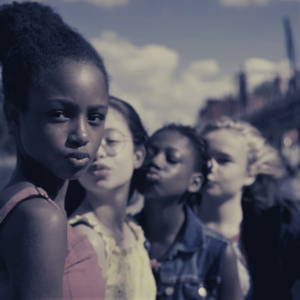The Worldwide Web is just that. A web. It’s intriguing, beautiful, mysterious, alluring, dangerous, deadly, intricate and detailed. It draws us in, enchants us and delights us. But there is a much more sinister side that involves dabbling with danger and even death.
While I love the internet and use it every day, I also have a bit more savvy than my young children. What’s more, being married to a man who has been addicted to porn, my senses are heightened to the dangers of the web. I’m not only worried about my kids stumbling across porn. I am worried about their exposure to inappropriate content. And I am worried about who has access to them!
Inappropriate Content
I can almost guarantee that you have opened a YouTube video and had some advert pop up that you’ve either been jarred or revolted by. I’m sure you’ve seen adverts with a woman scantily clad advertising something completely unrelated to her attire. Or maybe an advert that is completely innocent in the visuals but has some sketchy lyrics playing in the background. Or perhaps you’ve had a violent movie trailer auto-play when you’ve opened Netflix. We all let our kids watch stuff on YouTube. But through these adverts (if you just click ‘play’ and hand them the phone) they are being exposed to a taste of the adult world.
Not only is some content just ‘inappropriate’. Some content is really harmful! Children can easily be exposed to violence and porn. And the scary thing is that some sick people are putting violent or pornographic content into kids’ programmes. Maybe some of you heard about the self-harming Peppa Pig? Or graphic content included in other children’s cartoons? It’s nothing short of despicable!
Regarding porn, here are some stats.
Net Nanny claims that,
“Most statistics on pornography use say the average age of a child’s first exposure to pornography is 11 years old. New research from the security technology company Bitdefender, has reported children under the age of 10 now account for 22% of online porn consumption under 18 -years old.”
According to Youth First Inc,
“Kids don’t have to be looking for pornography; it is programmed to find them. To think that it won’t happen to your child leaves them at risk for stumbling upon sexually-explicit material online (whether they are looking for it or not) that they are not developmentally able to handle, emotionally or mentally.”
I once heard someone say that handing your child a device without teaching them how to use the device and internet safely is like handing them a 9mm gun and saying, “Go play!”
Children should never have unmonitored access to the internet and Wifi or data. You’re playing a dangerous game if they do.
The Access of Others to Your Children
It’s widely known that children have put up their details such as locations, names, schools and so forth on social media platforms and they have found their way into the wrong hands. Heck, I’ve seen adults post their details on social media on ‘fun’ Instagram posts! If adults aren’t savvy about their privacy online, can we really expect our children to be careful? There are predators trolling the internet searching for naïve children (and adults!). You may often see that I don’t post images showing my children’s faces or I blur them out. Nor do I post their names on my public social media accounts. Not only do I not want people to be able to identify my children. I also don’t want my children to be victims of deep faking (a process of using an image of someone and editing it into another image or video, often used in pornographic content). I don’t know how likely it is. But I’d rather not have images available to any random person do with as he/she chooses. Children are being groomed online all the time through chats on social media platforms or online gaming. It’s not hard to give many people access to our children! We are sometimes the biggest culprits, uploading pictures of our kiddies in the bath or their bare bottoms running around under the sprinkler and hashtagging the images – #bathtime #cutebum and so forth! While these images may be innocent in themselves, we are playing into the hands of paedophiles and child predators.
We don’t want to live our lives terrified of exposing our children to the web and to sick-minded people. However, we need to be a little less careless in how we handle this complex web.
1. Filtering Software
Installing filtering software is a start. Yes, your kids will still need to learn to have an internal filter as you can do precious little about what they are exposed to at school and with friends. But filtering content will limit their exposure to harmful content at home where they spend most of their time. Visit Break Free for more information on filtering software.
2. Know The Content
When your kids are little, make sure you screen content before you allow them to watch YouTube videos so that you know exactly what they contain. Ask yourself if the content is too scary, too violent or just plain inappropriate. And while the video in itself may be perfectly fine, check that the adverts aren’t questionable.
3. Turn, Run, Tell
If they are looking for content for a project (filtering software will help here), they might innocently tap in a word into a search engine and pull up some shocking images. Alternatively, they may click on a suggested video pop up. It’s not hard to come across questionable content. As I said, we need to ‘install’ that internal filter by teaching them what to do if they come across violent or pornographic content. Good Pictures, Bad Pictures by Kristen A. Jenson teaches children to Turn, Run and Tell. Make sure your kids know that you are their safe space and that they will not get into trouble by coming to you. Build on your relationship with them so they feel that they can confide in you and be honest.
4. Don’t be a Happy Snapper
We are careful to lock the doors, arm the house and let the Rottweilers loose at night. Yet we regularly upload images to social media platforms for the world to see detailing events of our lives. Allow me to give you an example. You post a picture of your child in school sportswear at a sports match with the comment,
Caden won first place for U11 cricket today! So proud of him!
Just from that one image I know the name of your child, the school he goes to, his surname (your surname presumably), his age and exactly what he looks like. From one image! Parents, we have to be more careful. I know a private investigator who was once part of the police force who spoke of a casual conversation between a teenage girl and a guy who, unbeknownst to her was, a child predator. She mentioned that she was playing a match against another school. He asked which school. She told him. She told him that she hated the kit she had to wear. He asked what it looked like. She told him. He may have asked what she looked like (or knew from her profile picture). At the match, she noticed a man watching her from the sidelines. It was him. He knew exactly where to look and whom to look for. She had given him all the information he needed. Don’t be the informant and give out your child’s identity and information without thinking carefully about what you are giving others access to!
5. Check Up
If your children have social media accounts, follow them or friend them. Don’t be that parent who breathes down their neck or sends embarrassing messages on their walls but just keep an eye on them. You bought the device. It belongs to you not them. You have the right to check it. No, don’t demand it every evening and give them the feeling that they can’t be trusted. Don’t belittle them. Just check every now and then. Protecting them is more important than giving them privacy. They are still young and impressionable and sadly, incredibly gullible and naïve. You are their protector and guardian, not their friend. You have been entrusted with their well-being. It’s up to you to be watching out for them. You would rather be a pest than regret not checking their phones sooner. The same private investigator tells of a situation in which a guy online met a girl in a chat room. They became ‘friends’ and he started buying her airtime so they could chat. He told her that unless she sent him a topless image, he would stop sending airtime. She told him she’d only send one. He pressured her for another. She refused. He told her he would send the one he already had in his possession to her dad. She sent another. Before long she was trapped with no way out. She didn’t know what to do. Her parents found a note on her bed after she had taken her life. Their lives are more important than their space!
6. Pray for Them
Some of you may think this is ridiculous but, at the end of the day, you cannot control your children. You may have all the right measures in place. But who knows what they will stumble across, or worse, go looking for. You don’t know what they will be exposed to by classmates or friends. There is only one person who is always with them and always watching over them. Do what you can and commit them into the Lord’s hands every day.
This may feel quite overwhelming and frightening but don’t let this weigh you down. Be informed and educated. Commit your children into the hands of their Heavenly Father. Then rest in the knowledge that you are doing what you can to keep your children safe. Leave the rest to Him.
online, safety, porn, violence, inappropriate content, children, protection, internet, wifi, device, filtering system, harmful, exposure, protect, parents, parenting
Photo Credit: StockSnap from Pixabay
Tags: children, device, exposure, filtering system, harmful, inappropriate content, internet, online, parenting, parents, porn, protect, protection, safety, violence, wifi





Leave a Reply